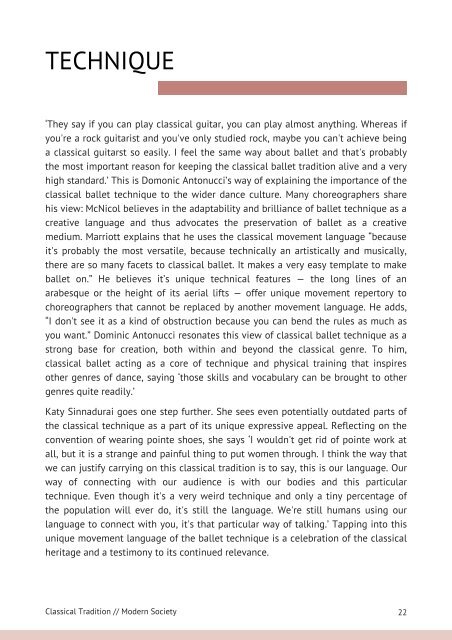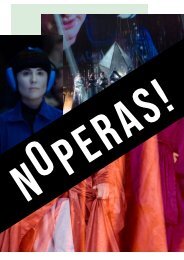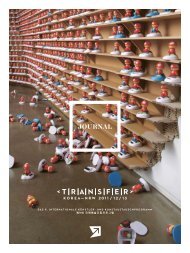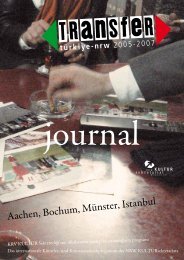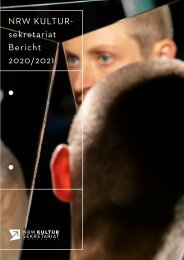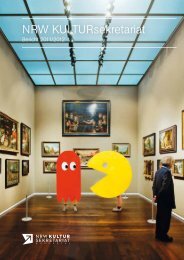Tanzrecherche NRW: Classical Tradition / Modern Society by Mirjam Otten
A handbook for creators and decision-makers on keeping classical ballet relevant
A handbook for creators and decision-makers on keeping classical ballet relevant
You also want an ePaper? Increase the reach of your titles
YUMPU automatically turns print PDFs into web optimized ePapers that Google loves.
TECHNIQUE<br />
‘They say if you can play classical guitar, you can play almost anything. Whereas if<br />
you're a rock guitarist and you've only studied rock, maybe you can't achieve being<br />
a classical guitarst so easily. I feel the same way about ballet and that's probably<br />
the most important reason for keeping the classical ballet tradition alive and a very<br />
high standard.’ This is Domonic Antonucci’s way of explaining the importance of the<br />
classical ballet technique to the wider dance culture. Many choreographers share<br />
his view: McNicol believes in the adaptability and brilliance of ballet technique as a<br />
creative language and thus advocates the preservation of ballet as a creative<br />
medium. Marriott explains that he uses the classical movement language “because<br />
it's probably the most versatile, because technically an artistically and musically,<br />
there are so many facets to classical ballet. It makes a very easy template to make<br />
ballet on.” He believes it’s unique technical features — the long lines of an<br />
arabesque or the height of its aerial lifts — offer unique movement repertory to<br />
choreographers that cannot be replaced <strong>by</strong> another movement language. He adds,<br />
“I don't see it as a kind of obstruction because you can bend the rules as much as<br />
you want.” Dominic Antonucci resonates this view of classical ballet technique as a<br />
strong base for creation, both within and beyond the classical genre. To him,<br />
classical ballet acting as a core of technique and physical training that inspires<br />
other genres of dance, saying ‘those skills and vocabulary can be brought to other<br />
genres quite readily.’<br />
Katy Sinnadurai goes one step further. She sees even potentially outdated parts of<br />
the classical technique as a part of its unique expressive appeal. Reflecting on the<br />
convention of wearing pointe shoes, she says ‘I wouldn't get rid of pointe work at<br />
all, but it is a strange and painful thing to put women through. I think the way that<br />
we can justify carrying on this classical tradition is to say, this is our language. Our<br />
way of connecting with our audience is with our bodies and this particular<br />
technique. Even though it's a very weird technique and only a tiny percentage of<br />
the population will ever do, it's still the language. We're still humans using our<br />
language to connect with you, it's that particular way of talking.’ Tapping into this<br />
unique movement language of the ballet technique is a celebration of the classical<br />
heritage and a testimony to its continued relevance.<br />
<strong>Classical</strong> <strong>Tradition</strong> // <strong>Modern</strong> <strong>Society</strong> 22


